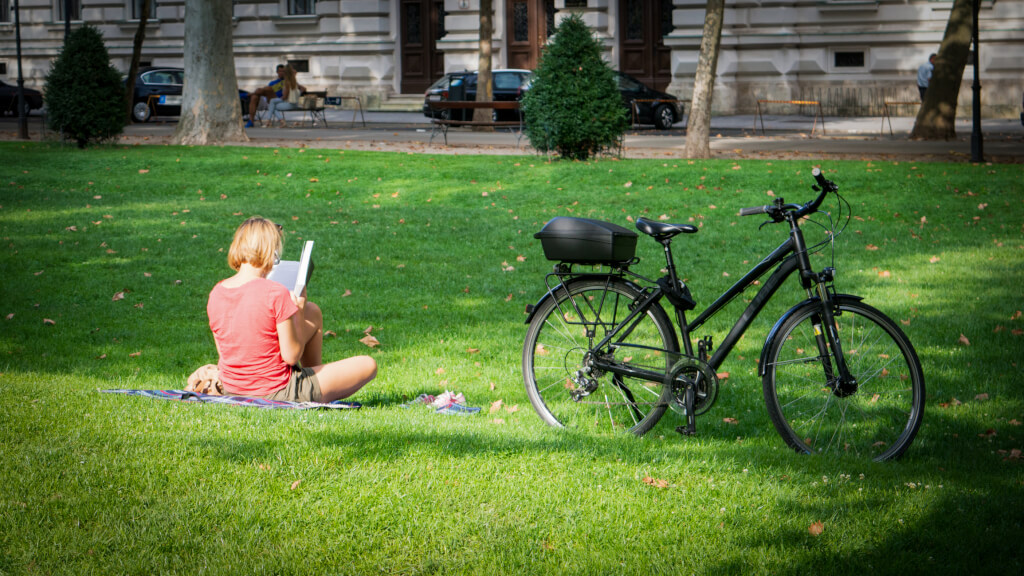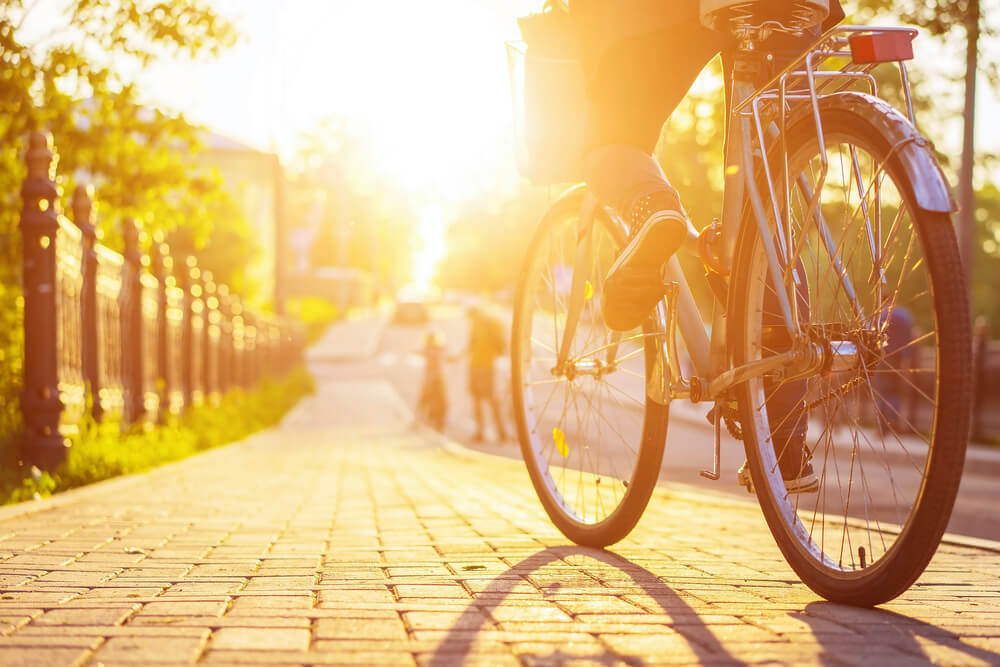Practical Guide to Biking in Central Park: Routes, Rentals, and Regulations
12.06.2025, 13:31 EST
ForumDaily New York
Exploring scenic landscapes by bike Central Park offers an enjoyable way to experience the park’s natural beauty. Well-maintained pathways and designated cycling lanes ensure a smooth ride, guiding cyclists past famous landmarks such as Bethesda Terrace and the Jacqueline Kennedy Onassis Reservoir.

Several rental providers offer a variety of bicycles, from standard models to electric-assisted options. Many services include helmets and maps, assisting riders in navigating the park’s extensive routes. Selecting an appropriate rental ensures a comfortable and efficient cycling experience.
Regulations are designed to promote safety for both cyclists and pedestrians. Riders must remain within marked lanes and adhere to speed limits, avoiding restricted areas such as certain pedestrian-only paths. Observing these guidelines helps maintain an organized and enjoyable environment. Whether cycling for leisure or fitness, riding through Central Park provides a unique perspective on its iconic scenery while ensuring a smooth and well-regulated experience.
Where to Rent a Bike Near Central Park
Finding a convenient location to rent a bike near Central Park ensures an enjoyable cycling experience. Several reputable rental shops operate close to major entrances, offering a variety of bicycle models suited to different riding preferences.
Most rental providers offer standard bicycles, electric-assisted models, and tandem options for groups. Helmets, maps, and locks are typically included to enhance safety and navigation throughout the park. Some services also provide guided tours, allowing riders to explore scenic routes with expert commentary.
Pricing varies based on rental duration, with hourly and full-day options available. Online reservations help streamline the process, ensuring availability during peak seasons. Shops positioned near key entrances make pickup and drop-off easy, allowing riders to start their journey without delays.
Choosing a well-reviewed provider guarantees a smooth rental experience, allowing cyclists to explore Central Park’s pathways, landmarks, and natural beauty with comfort and convenience throughout their ride.
Rules and Regulations for Cyclists in Central Park
Cyclists must follow established guidelines to ensure safety and maintain harmony with pedestrians in Central Park. Designated pathways accommodate riders, offering a structured environment that balances recreation and accessibility.
Speed limits help prevent accidents, with cyclists expected to adjust their pace based on surrounding traffic conditions. Certain areas prohibit bike central park usage, reserving paths exclusively for walkers. Clear signage throughout the park assists riders in navigating appropriate routes while avoiding restricted zones.
Helmet use is strongly encouraged, especially for younger riders, promoting safety in high-traffic areas. Regulations also require adherence to traffic signals and yield rules, ensuring smooth movement among different visitors. During peak hours, cyclists must exercise caution and remain aware of pedestrian density.
Respecting park guidelines helps preserve the experience for all visitors. By following regulations, riders contribute to a safe and enjoyable atmosphere, allowing everyone to appreciate the park’s scenic beauty and accessibility.
Central Park Loop: Map Overview and Distance Details
Central Park Loop offers a well-defined route for cyclists and joggers, providing a scenic journey through the park’s most iconic areas. The full loop spans approximately 6.1 miles, covering various landscapes and landmarks.
The path consists of multiple entry points, allowing visitors to start their ride at convenient locations near major avenues. It features a combination of flat stretches and gentle inclines, offering a balanced experience for both casual riders and experienced cyclists. Clear markers along the route assist with navigation, ensuring smooth transitions between different sections.
Riders can enjoy views of major attractions, including Bethesda Terrace, the Reservoir, and Sheep Meadow. Well-maintained roadways and designated lanes enhance safety, while specific regulations help manage traffic flow. Whether cycling for leisure or fitness, the loop provides an enjoyable way to explore the park’s natural beauty. Careful route planning ensures an efficient and pleasant experience throughout the journey.
Recommended Entry Points for Cyclists
Cyclists entering Central Park can choose from several well-positioned access points, ensuring a smooth and efficient ride through scenic landscapes. Major entrances provide direct access to well-maintained pathways, allowing riders to begin their journey with ease.
Popular entry locations include entrances along Fifth Avenue, Central Park West, and Columbus Circle. These points connect to designated cycling routes, ensuring safe navigation throughout the park. Riders can select entryways based on proximity to key attractions, optimizing their route for exploration.
Certain access points are better suited for specific cycling preferences. For instance, entrances near the southern edge offer direct paths to major landmarks, while northern locations provide access to quieter, nature-filled areas. Planning entry locations based on route objectives enhances the overall experience.
Each access point ensures seamless transitions onto cycling paths, allowing riders to enjoy the park’s beauty while following designated lanes designed for comfort and safety.
Best Times of Day and Seasons for Biking Comfortably
Choosing the right time and season for biking ensures a comfortable and enjoyable ride. Early mornings provide cooler temperatures and quieter paths, making them ideal for uninterrupted cycling. Late afternoons offer a balance between warmth and scenic lighting, creating a relaxed riding atmosphere.
Seasonal variations impact overall comfort. Spring and autumn feature moderate weather and pleasant breezes, enhancing the cycling experience without excessive heat or cold. Summer offers extended daylight hours but requires hydration and sun protection for optimal enjoyment. Winter biking is possible with proper gear, including insulated clothing and safe road conditions.
Weekday mornings generally present fewer crowds, allowing for smoother navigation. Weekends may be busier, but selecting off-peak hours reduces congestion. Adjusting biking schedules based on weather forecasts and seasonal changes ensures an enjoyable experience. Thoughtful planning enhances comfort, allowing riders to appreciate the beauty of their surroundings without unnecessary challenges.

Safety Considerations and Traffic Flow Inside the Park
Safety and organized traffic flow are essential for maintaining a secure and enjoyable environment inside the park. Designated lanes guide cyclists, joggers, and pedestrians, ensuring smooth movement while reducing congestion.
Speed regulations help prevent accidents, with clearly marked signs indicating safe riding zones. Riders should remain vigilant, adjusting their pace based on pathway conditions and pedestrian density. Wearing helmets is highly recommended, providing additional protection in busier areas.
Traffic flow within the park follows a structured layout, with one-way routes preventing confusion among visitors. Cyclists must yield at intersections and obey traffic signals to avoid collisions. Specific hours may be designated for certain activities, ensuring a balanced and orderly experience.
Adhering to safety measures promotes a responsible atmosphere where all park visitors can enjoy recreational activities without unnecessary risks. Thoughtful route planning and awareness of surroundings contribute to a seamless and pleasant cycling experience throughout the park.
Parking, Rest Areas, and Available Amenities Along the Loop
Parking options near the loop provide convenient access for cyclists and visitors. Designated lots near park entrances allow easy drop-off and retrieval, ensuring a seamless transition onto pathways. Some areas offer bicycle racks, allowing riders to secure equipment while exploring surroundings.
Rest areas positioned along the loop provide essential stops for relaxation. Benches, shaded spaces, and designated scenic viewpoints encourage visitors to pause and enjoy the atmosphere. Drinking fountains ensure hydration, complementing well-maintained paths suited for extended rides.
Amenities enhance the experience by offering structured support for cyclists and pedestrians. Restrooms positioned at strategic locations maintain accessibility, while snack vendors provide quick refreshments. Some spots feature rental stations, assisting riders in selecting appropriate equipment. Thoughtful planning ensures that visitors experience both convenience and comfort while navigating the loop, reinforcing an enjoyable and efficient cycling journey suited to various fitness levels and recreational interests.
Nearby Attractions Easily Reached by Bike
Central Park provides excellent access to nearby attractions, making it easy for cyclists to explore cultural landmarks and scenic destinations. With dedicated bike paths and well-maintained roads, riders can reach various points of interest conveniently.
Museums and historic sites positioned close to the park allow visitors to enjoy enriching experiences. Locations such as the Metropolitan Museum of Art and the American Museum of Natural History are accessible by bike, offering engaging exhibits within a short distance. Other landmarks include Columbus Circle, known for its bustling atmosphere and proximity to shopping districts.
Cycling remains a practical way to reach vibrant attractions, offering both leisure and cultural engagement while maintaining flexibility and convenience throughout the journey.
Tips for Families and First-Time Riders in Central Park
Families and first-time riders can enjoy a smooth cycling experience in Central Park by following simple guidelines. Choosing designated bike paths ensures safety while allowing riders to explore scenic landscapes comfortably.
Selecting an appropriate bicycle is essential, especially for younger riders. Rental providers offer various sizes and models, including tandem options for families. Helmets are recommended to enhance protection, ensuring a secure ride for all participants.
Planning routes in advance helps minimize navigation challenges. Maps highlight key landmarks and preferred cycling areas, making exploration easier. Beginners benefit from quieter paths, avoiding busier intersections and crowded spaces.
Adapting to park rules enhances the experience. Riders should maintain controlled speeds, yield to pedestrians, and follow designated traffic signals. Hydration and rest breaks contribute to comfort, especially on longer rides.
By considering safety measures and well-structured planning, families and first-time riders can enjoy a stress-free cycling adventure in Central Park’s picturesque surroundings.









